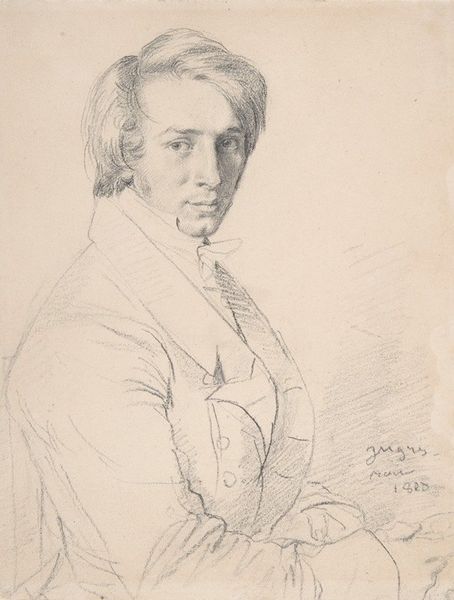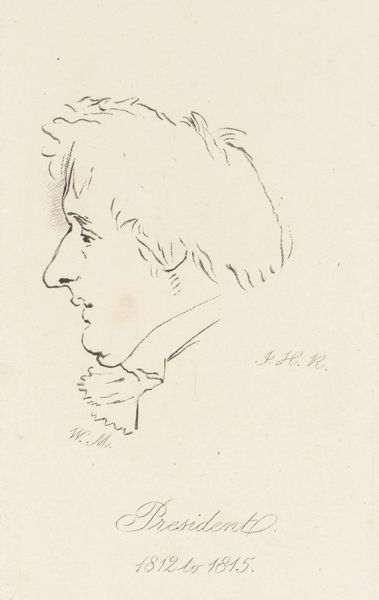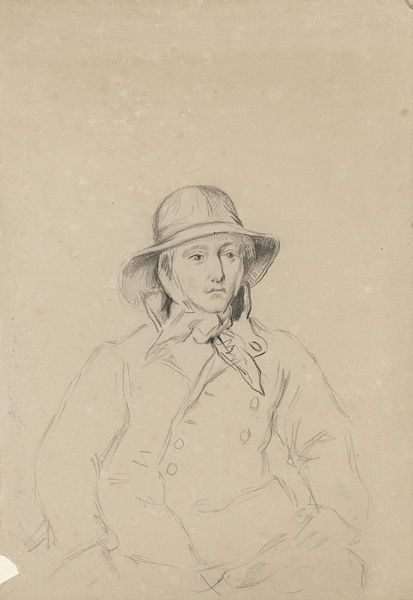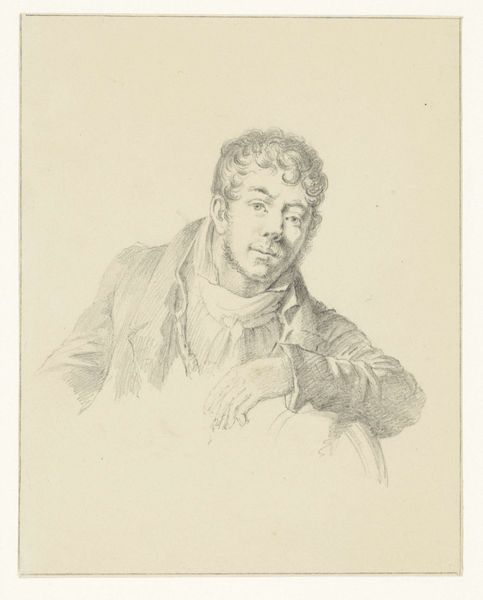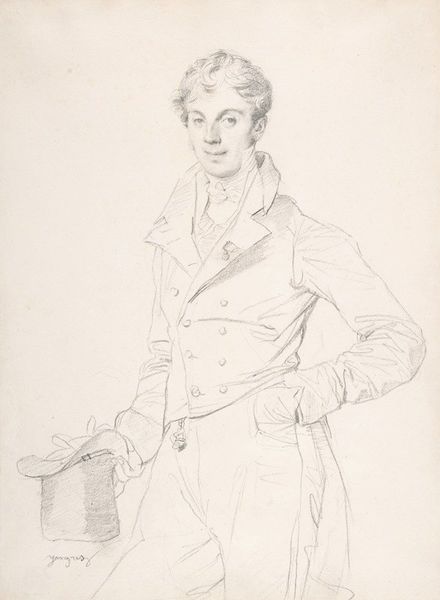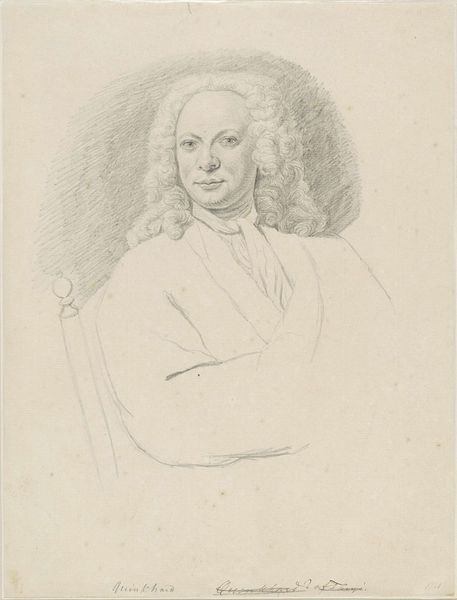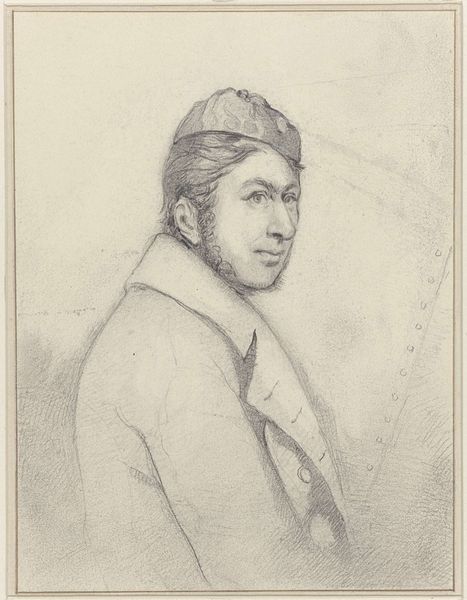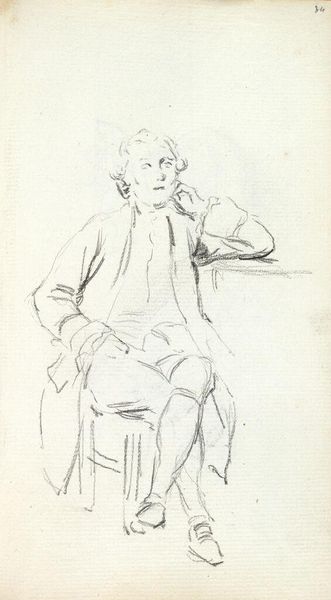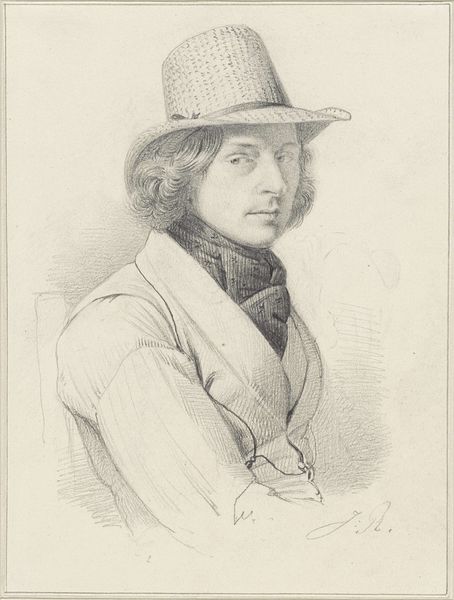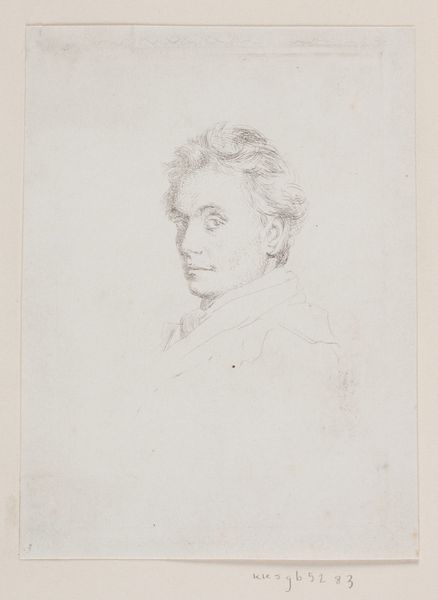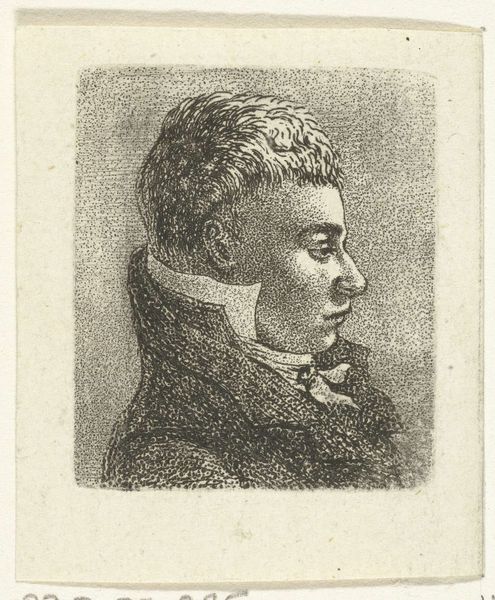
Portret van een jongeman, driekwart naar links en van opzij 1774 - 1837
0:00
0:00
charleshowardhodges
Rijksmuseum
drawing, pencil
#
portrait
#
drawing
#
neoclacissism
#
self-portrait
#
figuration
#
pencil drawing
#
pencil
#
portrait drawing
Dimensions: height 370 mm, width 280 mm
Copyright: Rijks Museum: Open Domain
Editor: Here we have Charles Howard Hodges' "Portrait of a Young Man," a pencil drawing created sometime between 1774 and 1837. It's currently housed in the Rijksmuseum. What strikes me most is the subject's unwavering gaze. What do you see in this piece, especially considering the period in which it was created? Curator: Well, let's consider the social landscape of the late 18th and early 19th centuries. Hodges' portrait, with its neoclassical aesthetic, emerged during a time of revolution and upheaval, deeply shaped by Enlightenment ideals of reason and individualism. The gaze, as you point out, becomes especially charged when you think about who had the privilege to have their image captured, and who was conspicuously absent. What kind of statement does it make, or perhaps not make, about the power dynamics of the time? Editor: That's fascinating. I hadn't considered the power dynamics inherent in portraiture itself. The subject's somewhat stiff posture and formal attire further emphasizes that sense of established authority, doesn't it? Curator: Exactly. The meticulous detail in his clothing, the carefully rendered hair, all speak to a certain level of societal expectation. We need to look critically at the ways such portraits naturalize class distinctions and reinforce hegemonic ideals of masculinity and success. Is the gaze a symbol of self-assuredness, or could it also mask anxieties about maintaining a particular social role? Editor: I see what you mean. Viewing the work through that lens reveals layers of meaning I wouldn’t have noticed initially. Thank you. Curator: Of course! Examining historical artworks by dissecting cultural biases that informed their creation, and which ones they may have reinforced, can really open our eyes to a different view of that artwork, and that specific historical period.
Comments
No comments
Be the first to comment and join the conversation on the ultimate creative platform.


